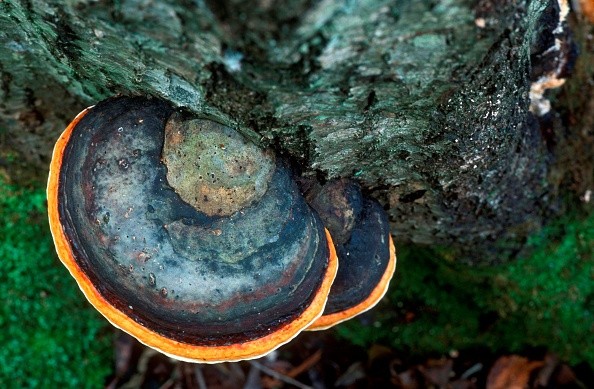A fungus that looks like an already decaying human fingers is endangered but trying to survive in Australia, placing its zombie-like digits all over trees that fell on an island not too far from the southern coast of the continent.

Tea-tree Fingers
Hypocreopsis amplectens is commonly referred to as tea-tree fingers, because its shape looks like plump human fingers attaching itself to wood on the forest floor, though the fungus' spotted pinkish-brown color and texture make those digits appear more lifeless than living.
These Tea-tree fingers are very rare, and these fingers exist in just a few locations on the mainland of Victoria in southeastern Australia. But a tour that was headed by scientists from Australia's Royal Botanic Gardens Victoria (RBGV) recently gave confirmation that the fungus has increased the tightness of its grip in not less than two other areas in the Australian state.
A postdoctoral fellow at RBGV and also a leader of the fungus-finding expedition, Michael Amor said the fleshy looks of the fungus may be frightening to humans, but it developed into that strange shape to aid in its survival.
Largest Population of Tea-tree Fingers Ever Recorded
Amor told Live Science in an email that as it is discovered on dead, usually detached branches, the finger-like form may assist its flexibility in developing over curves/crevices and surviving with bending, cracking, and falling.
The fungus is parasitic, developing on another fungus host that decays wood. It's also a palatable meal for moth larvae and other insects, "so it is an instance of the complex food-webs that characterise complete ecosystems," Amor said.
According to an RBGV statement, a group of researchers together with volunteers reported discovering tea-tree fingers in two places at a safeguarded national park on French Island, Victoria. One of those regions has the largest population of tea-tree fingers ever recorded, more than 100 individual fruiting bodies, beyond the total fungus population at all the locations on the mainland.

Genetic Health of This Fungus
Discovering a lot of instances of these lifeless-looking digits gives some sort of hope for the future of parasite, as a warming climate and loss of habitat are making the fungus lose its power on the mainland, according to the statement.
Amor explained in the email, saying tea-tree fingers is a very specialised fungus that needs a unique set of conditions in order to develop. It needs a particular tree species to happen at just the perfect density to make ideal humidity and canopy cover available. "Large regions of natural vegetation are needed to permit these particular micro-climates to take place and, unfortunately, these alarming rate are been lost.
Amor is making use of DNA analysis to know whether the fragmentation of habitat and isolation of the fungus populations has some impact on their genetic health. Other ecologists are carrying out investigations concerning the delicate balance of organisms in the fungus' ecosystems, to spot the conditions that give the fungus permission to thrive.
Related Article : Wooden Floors With Sprouting Fungi Produce Electricity When Walked On!
For more news, updates about parasitic fungus and similar topics don't forget to follow Nature World News!
© 2025 NatureWorldNews.com All rights reserved. Do not reproduce without permission.





